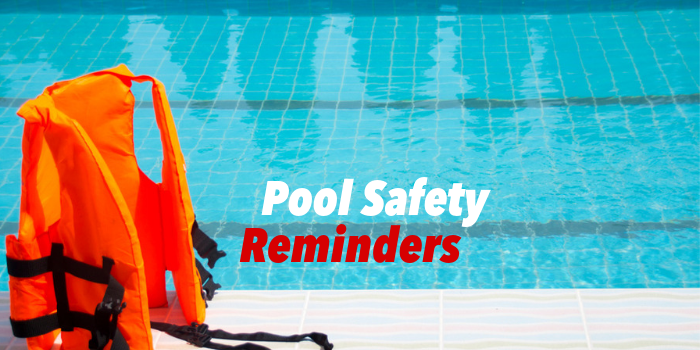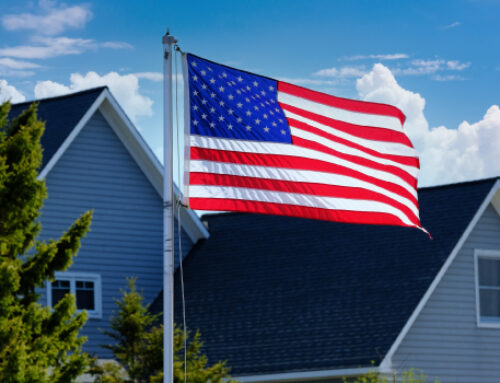Pool season is here! Children will soon be out of school for the summer, and families are sure to be visiting the HOA pool much more often – that’s why we’re providing some simple safety tips you can use to prepare your community for the pool season.
Use signs to remind homeowners of safe conduct
Confirm that the pool rules are clearly posted near the entrance gate. Secondly, place a sign that has instructions for emergency situations in clear view. This way, if something happens, residents will know what to do right away.
Other helpful signs would include “No Diving,” “No Rough Play,” “Walk, Don’t Run,” and “Stay Away from Pool Drains.” These simple notices will remind homeowners to conduct themselves safely in the community pool area.
Be prepared for emergencies: keep equipment nearby and on hand
Keep rescue equipment, such as a life ring and rescue tube, near your sign with emergency instructions. To ensure that the equipment is always on hand, remind homeowners not to use the equipment as flotation devices or take it from the pool area.
Place a phone next to the pool so homeowners can make emergency calls. Put the necessary numbers on speed dial or have them typed up on a laminated page next to the phone. Lastly, keep a stocked first aid kit at your pool area for non-emergency injuries.
Be mindful: non-swimmers should be supervised at all times by a parent or guardian, even if a lifeguard is on duty!
Drowning is always a risk. Some associations require swim tests for swimmers to swim alone. In general, to prevent drowning, do not allow non-swimmers into the pool area unless a responsible party is supervising them at all times. Advise your homeowners to keep their non-swimmers within reach.
You can also encourage the adults and teens in your community to take CPR lessons to increase the overall safety of your community pool.
Close the pool during unsafe conditions
After dark, fewer homeowners are out and about, and visibility is low. So, if an incident happens at the pool, there is much less of a chance that someone will notice it. Keeping the pool closed late at night can prevent unnoticed emergencies.
High winds and heavy rains are obviously unsafe conditions for any outdoor recreational activity, including swimming. However, sometimes a dreary sky can turn into a storm, so keep an eye on weather forecasts. Even if a rain shower looks like it might clear up, closing the pool during potentially dangerous weather can be a good safety precaution.
Ask homeowners to be your eyes and ears
Encourage community members to notify you if they see any risky activities at the pool area, such as running, breath-holding contests, unsupervised children, trespassing, jumping/diving in undesignated areas, or games of volleyball, football, or wrestling in the pool.
If you are notified of such behavior, you can send out safety reminders to the community. If the behavior persists, consider politely speaking to the individuals involved. If talking does not produce the desired result, you may determine to suspend pool privileges, depending on the level of danger the activity caused.
Make it shine
Clean pools are more than attractive additions to your neighborhood and they also support residents’ safety. Having the community pool cleaned regularly, usually once per week, prevents swimmers from getting infections, rashes, earaches, and other irritations. Carefully maintaining the chemical levels in your community pool will also help swimmers avoid these discomforts.
On top of promoting basic safety measures, such as applying sunscreen regularly, staying hydrated, staying sober, and always swimming with a buddy, as a Board member, you can follow these safety precautions to help ensure that your homeowners have a safe and fun summer.
For more information on water safety, or to sign up for classes, you can visit the Red Cross website at Red Cross.







